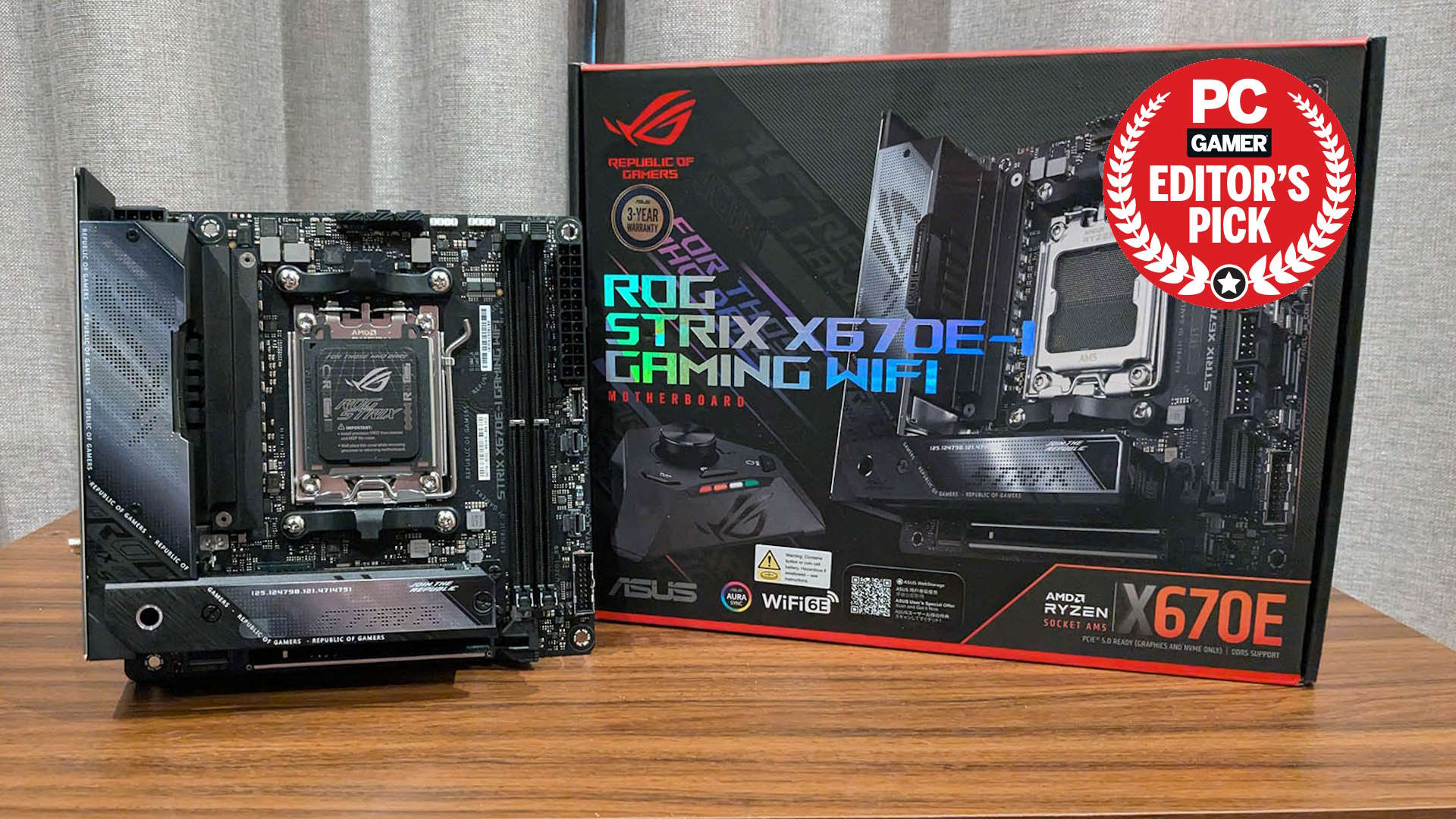Our Verdict
The ROG Strix X670E-I Gaming WiFi somehow manages to pack a high quality feature set into its Mini-ITX size. Given what it offers, it's worthy of its relatively steep asking price. It's in a class of its own.
For
- Strong VRM
- Loads of USB including dual USB 4
- ROG Hive
- PCIe 5.0 GPU and SSD support
Against
- Only two SATA ports
- It's still pretty pricey
PC Gamer's got your back
If you're after a Mini-ITX motherboard, you'll usually have to put up with some almost inevitable compromises. There's just no way to pack a comprehensive feature set onto a 17cm x 17cm motherboard in the same way you could on an similarly priced ATX board. Or is there?
An impressive engineering showcase that effectively eliminates some of the compromises inherent to Mini-ITX motherboards.
The Asus ROG Strix X670E-I Gaming WiFi aims to give users more than they'd expect from a Mini-ITX motherboard. Rather than trying to cram everything onto a two dimensional PCB, Asus has gone into the third dimension. It's shifted several features onto riser cards, and there's an additional USB connected audio device that also functions as something of an external dock. The Strix X670E-I WiFi is an impressive engineering showcase that goes a long way to eliminating the compromises inherent to Mini-ITX motherboards, though the ability to install many M.2 drives is a still a step too far.
At $399 / £409 / AU$639, it's an expensive piece of kit to be sure, but it's still competitive against upper mid-range ATX options and well below the price of flagship boards. It's a board for those that want the ultimate AMD Mini-ITX system. And, it's already got a BIOS with support for next-gen Ryzen 9000-series processors.
The clunkily named Asus ROG Strix X670E-I Gaming WiFi features a 10+2+1 phase VRM with 110a per stage. It's easily able to handle the demands of a Ryzen 9 7950X processor, and surely the high-end SKUs to launch in the future. The heatsink isn't what you'd call gigantic, but there is a small embedded fan there in case things get a bit toasty. It supports up to DDR5-8000 memory, but who knows what it might be capable of when next-gen processors make their debut.
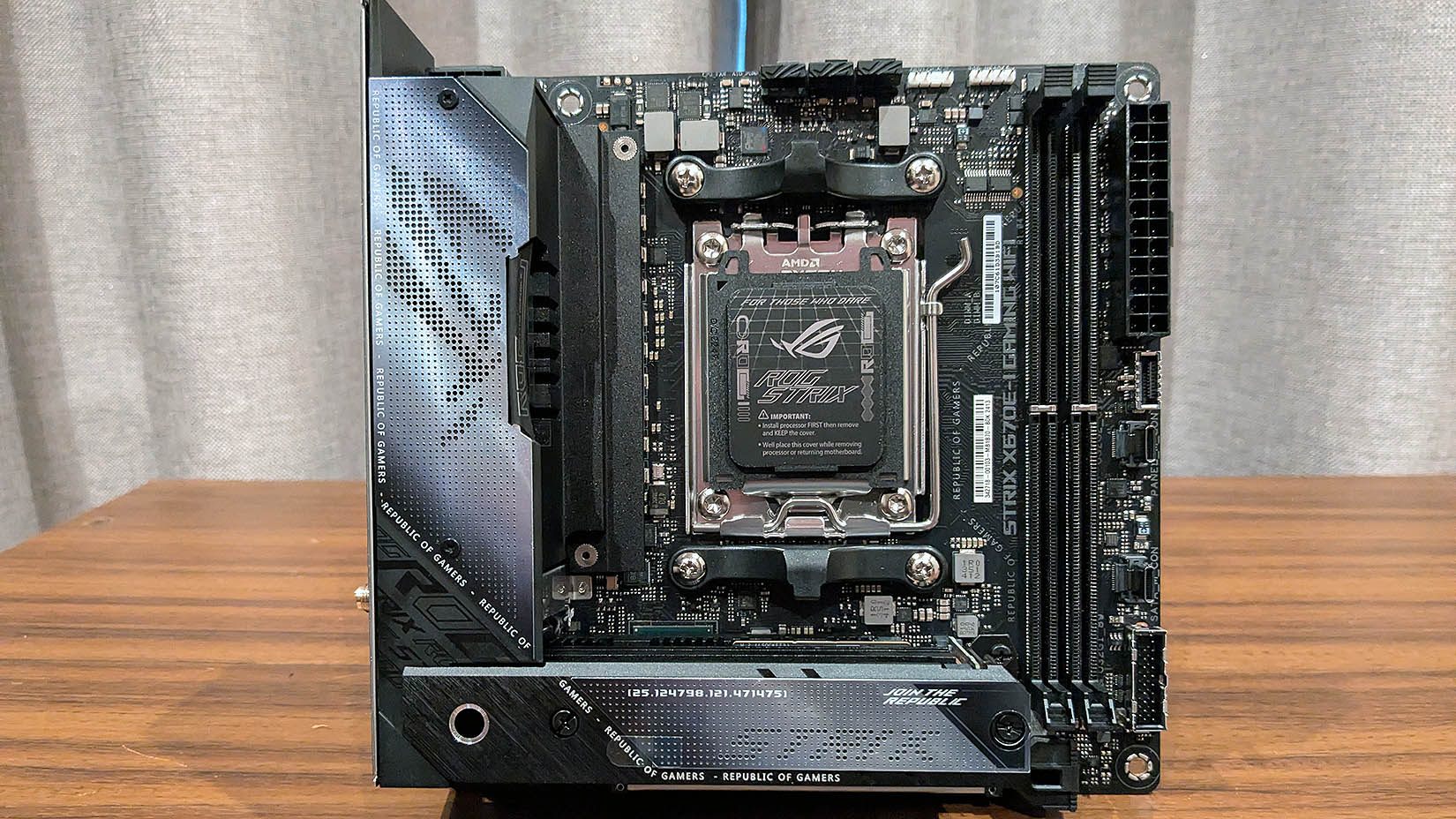
Socket: AMD AM5
CPU compatibility: AMD Ryzen 7000 and 8000-series processors
Form factor: Mini-ITX
Memory support: DDR5-8000+(OC), up to 96GB
Storage: 2x M.2, 2x SATA
USB: Up to 2x USB 4, 6x USB 10Gbps, 2x USB 5Gbps, 3x USB 2.0
Display: 1x HDMI 2.1, 2x USB 4
Networking: Intel 2.5G LAN, Intel WiFi 6E
Audio: Realtek ALC4050
Price: $399 / £409 / AU$639
The board features both a PCIe 5.0 x16 slot and primary M.2 slot. There's a second slot that supports a Gen 4 drive. These are stacked together. This section of the board is mightily impressive. It incorporates a detachable daughter board for the second slot, and there are layers of heatsinks dedicated to cooling the chipset at the bottom of the stack, and the two drives that sit atop it. There's another small fan that cools the whole assembly, but this can be set to only spin up when it all gets a bit hot under the collar. Note that a Gen5 SSD will inevitably end up reaching higher temperatures than you'd see compared to an isolated drive on an ATX board. Decent case airflow is still a must, which can be tough to achieve in a small form factor build.
The two M.2 drives are joined by two SATA ports. That's about the only weakness of the board. File hoarders will not be satisfied with support for just four drives, though with USB4 on board, you could always add speedy external drives.
The two SATA ports are contained on a daughter board that Asus calls the FPS-II card. It connects to the board via a pair of USB Type-C connectors and it contains the aforementioned SATA ports, the case headers, USB 2.0 headers, an overclocking mode switch and clear CMOS button. It's a relatively simple but clever way to claw back some of that limited Mini-ITX PCB space.

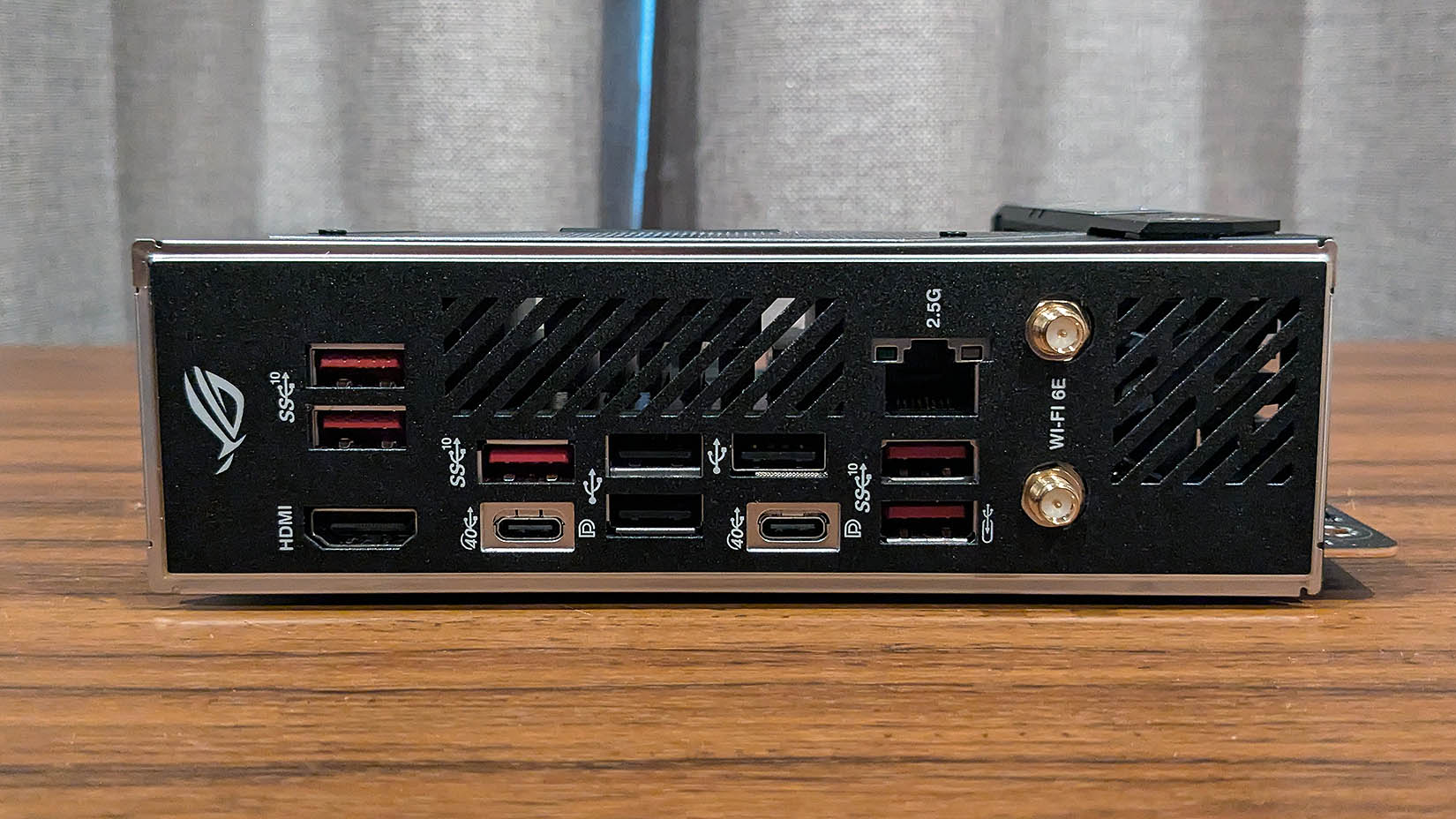
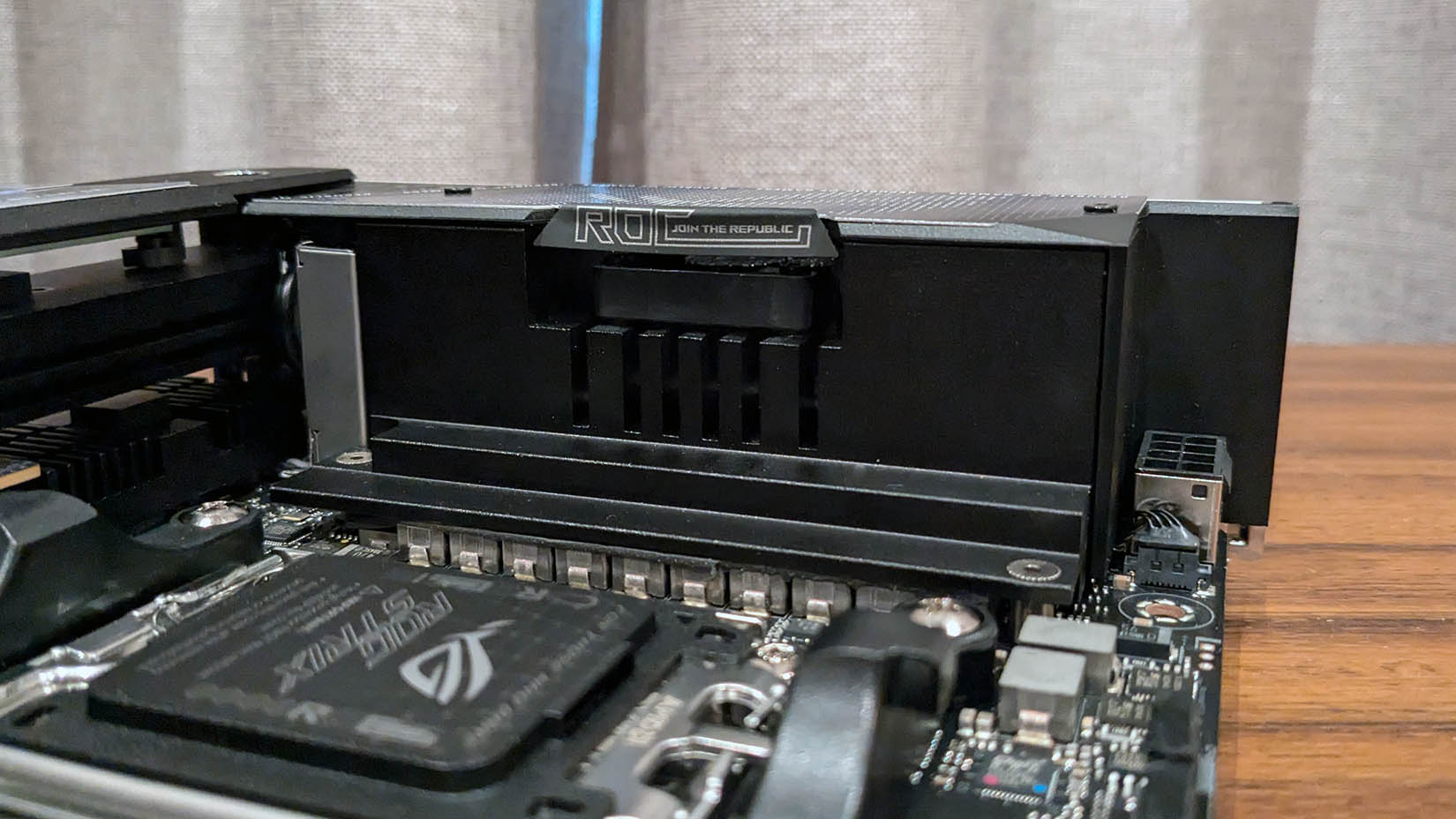
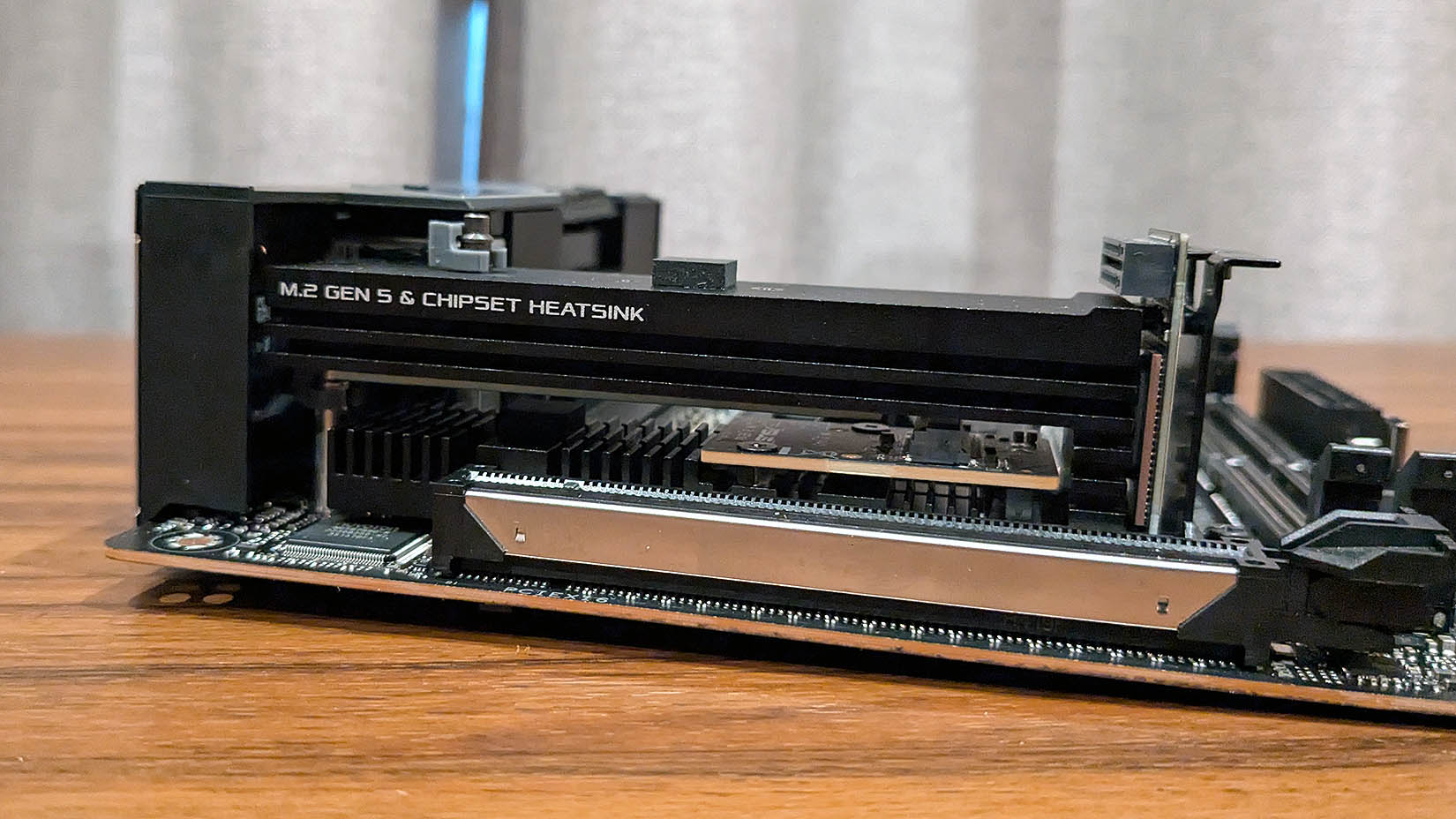
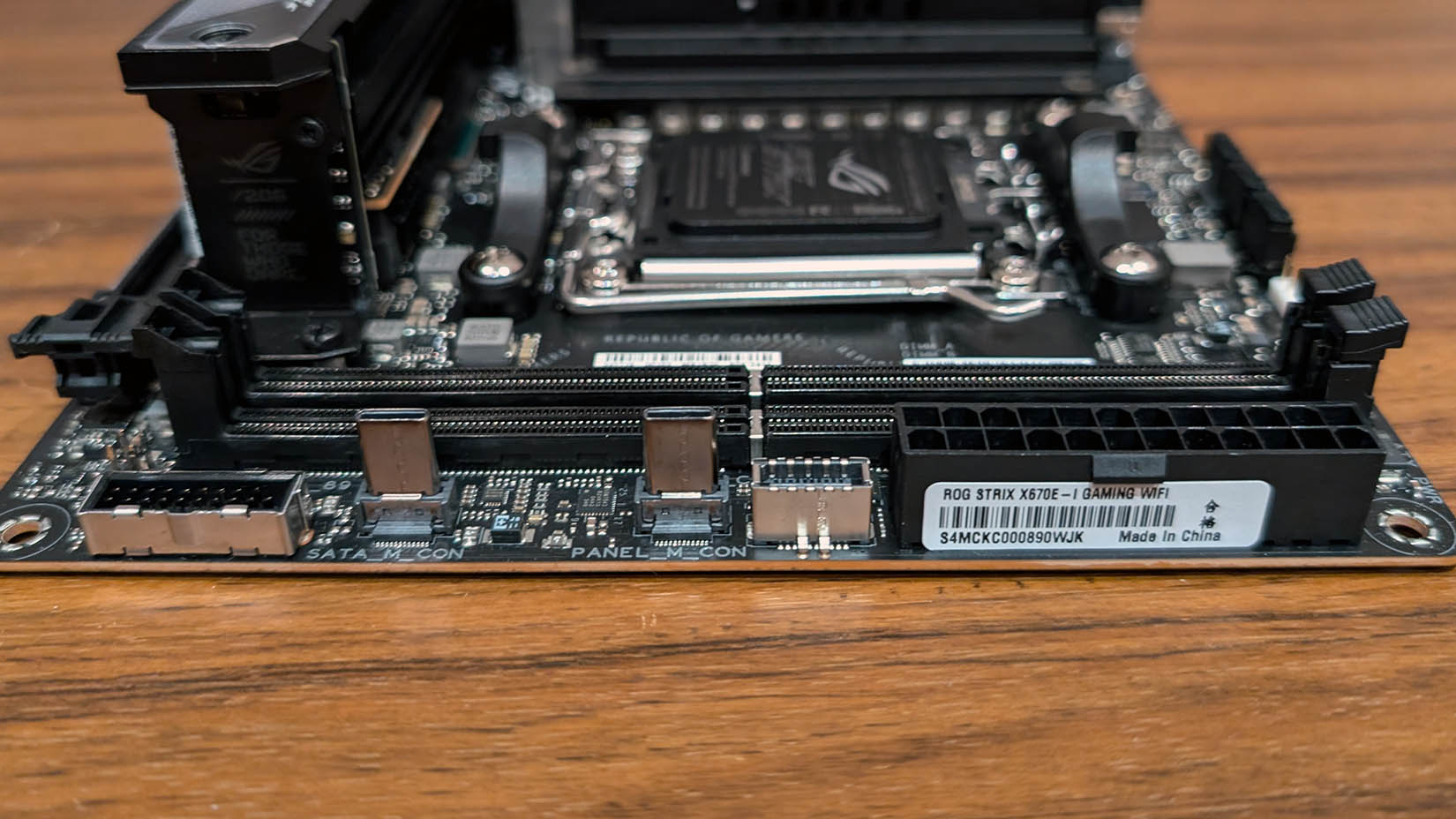
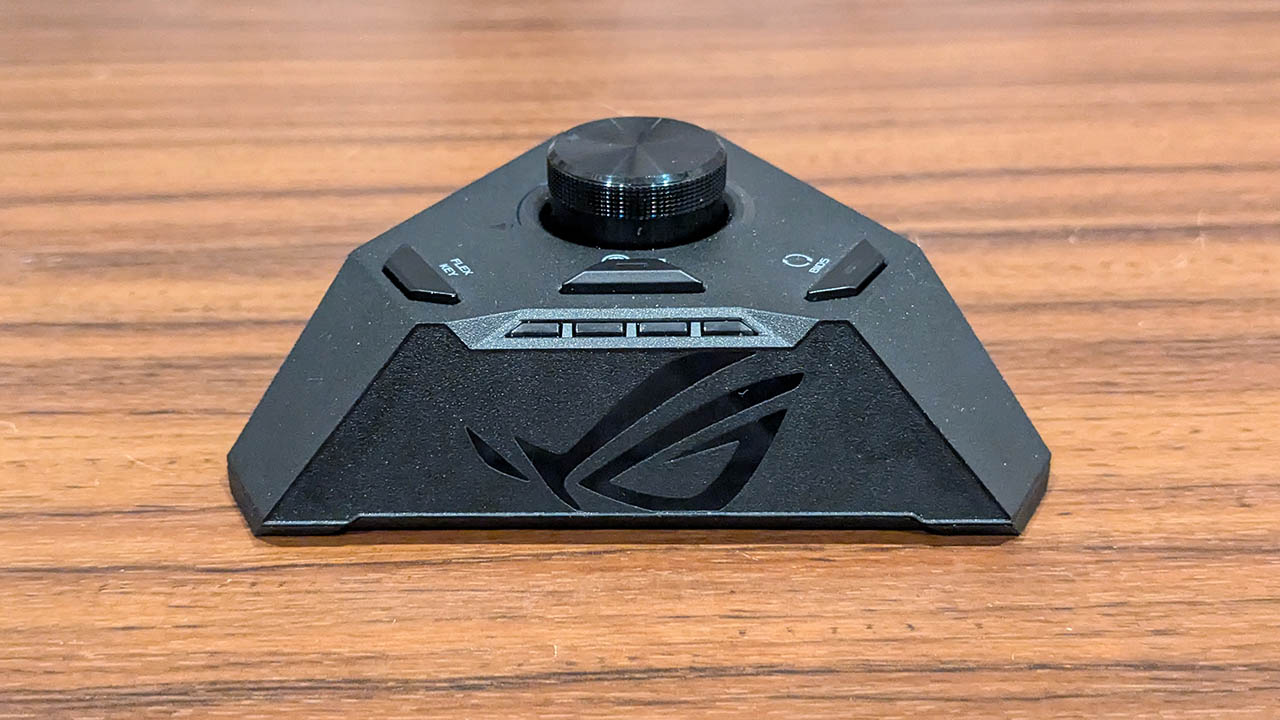
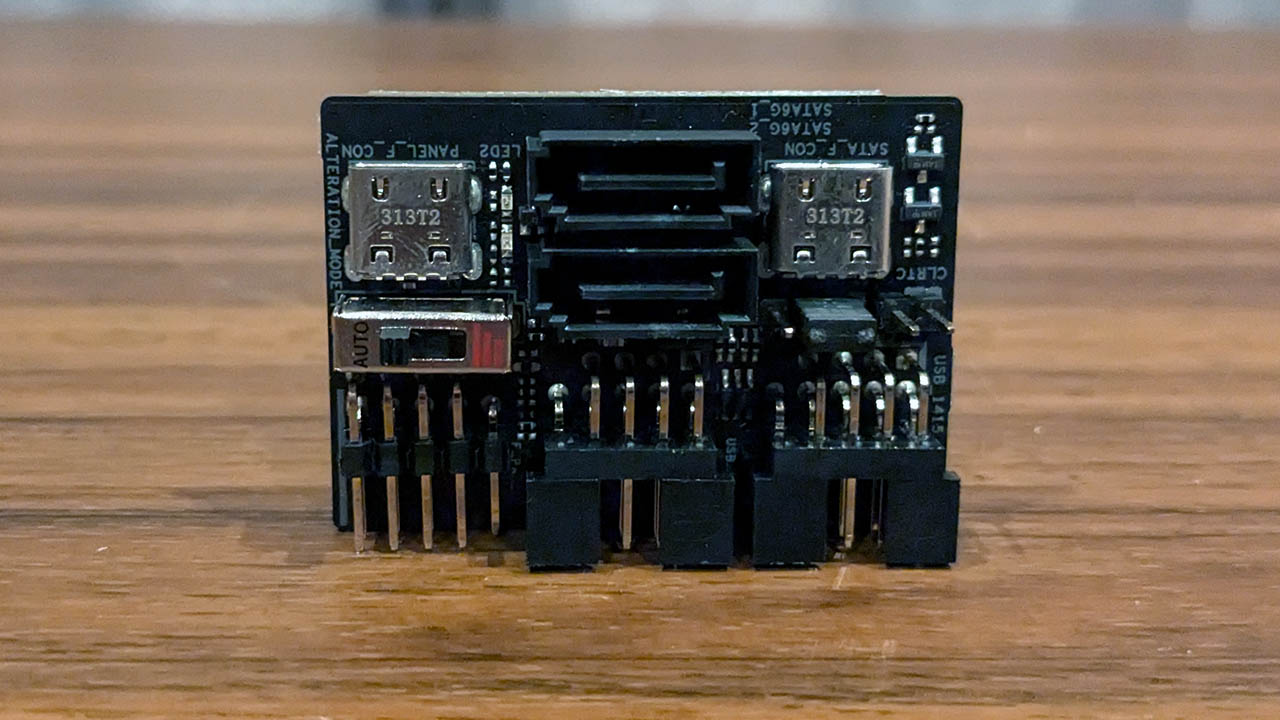
Even more impressive is an external USB connected device called the ROG Hive. It's an external sound card that's based around a Realtek ALC4050 codec, but also includes an ESS Sabre 9260Q DAC. This is a key example of thinking literally outside the box, as such components and their associated circuitry would not be possible to jam into the limited space on a Mini-ITX PCB.
The Hive offers a lot more though. It features a Precision Boost Overdrive button, programmable flex button, and another 10Gbps Type-C port plus another Type-A port that allows BIOS flashbacks. It's an impressive and notably well-built little device.
The rear I/O puts nearly every other Mini-ITX board to shame. The highlight is a pair of USB4 ports, both of which can drive Type-C monitors. These are joined by five Type-A 10Gbps ports and three USB 2.0 ports. Ten ports on the rear of a Mini-ITX board is a rare thing, and with the various headers, plus the ports on the ROG Hive, it really is loaded on the USB front.
There's a HDMI port, and you get Intel WiFi 6E and 2.5G LAN. It would be nice to get 5G LAN and/or WiFi 7, but this is an X670 board. WiFi 7 wasn't available when it launched and 5G LAN was considered a flagship tier feature. You'll have to wait for X870 boards if you want faster networking.
System Performance
Gaming Performance
CPU: AMD Ryzen 9 7950X
Graphics: Nvidia GeForce RTX 4090 Founders Edition
RAM: 2x 16 GB G.Skill Trident Z5 DDR5-6000 C36
Storage: 2TB Kingston KC3000
Cooling: Cooler Master PL360 Flux 360 mm AIO
PSU: Corsair HX1000i
Gone are the early days of niggles and flaky DDR5 memory support on the AM5 platform. The ROG Strix X670E WiFi has received well over a dozen BIOS updates and during my testing displayed none of the issues that I encountered during the first wave of X670 launches. X670 and Socket AM5 can be considered a generally mature platform.
The board's performance was consistent, and it was happy with my Samsung based G.Skill DDR5-6000 test kit, which was not always the case on some other boards I tested with pre-Ryzen 7000-series launch BIOS.
✅You want a Mini-ITX board with few compromises: With Gen 5 GPU and SSD support, plus USB4 and good quality audio, the X670E-I is a good step up from nearly every other Mini-ITX board.
✅ You want loads of USB ports: USB4 is very welcome. It can drive external monitors or allow you connect fast external SSDs. There are plenty of USB 3.x ports for all your devices too.
❌ You want to install more than four internal drives: Just two M.2 slots and two SATA ports is disappointing. File hoarders will need to look elsewhere unless you're happy with external USB drives.
I came away seriously impressed by the Asus ROG Strix X670E-I Gaming WiFi. It somehow manages to cram a high-end feature set into a Mini-ITX form factor with few compromises. I love the inclusion of dual USB 4 ports in particular, and the ability to run a PCIe 5.0 SSD and a next-gen PCIe 5.0 GPU is welcome too.
The ROG Hive is also a highlight. It's a great idea to shift space-hogging audio circuitry away from the PCB and into an external device. But rather than just designate it as an external sound card, Asus went well beyond this and included some useful features with even more USB ports, and even an AMD PBO button.
And speaking of USB ports, Asus gives you another eight ports on top of the USB4 ports on the rear panel. The Hive adds more, and with the case USB headers, The X670E-I offers a really comprehensive set of USB ports for all manner of devices and peripherals.
The only glaring weakness of the board is its storage complement. Asus could have included a third M.2 slot on the rear of the board, or made the FPS-II card a little bigger with an extra two SATA ports. The latter might have been too much of an ask from its USB-C connection though.
At $399 / £409 / AU$639, the Asus ROG Strix X670E-I Gaming WiFi is an expensive proposition, but not overly so given what it manages to cram into its diminutive size. There are plenty of ATX boards around that price. Given its unique characteristics, and the inclusion of the ROG Hive and the daughter boards, there would have been a lot of R&D effort involved, so it's understandable for Asus to charge a premium based on that alone.
With AMD stating it intends to support AM5 for years to come, it's a good investment too. After BIOS updates, you'll be able to pop in a high core count Ryzen 9 9950X, future X3D models, and surely Zen 6 CPUs as well.
The Asus ROG Strix X670E-I Gaming WiFi stands out as a premium Mini-ITX motherboard for users looking to build a high-end AMD system. We have no problem recommending this little ROG board. It's in a class of its own.
The ROG Strix X670E-I Gaming WiFi somehow manages to pack a high quality feature set into its Mini-ITX size. Given what it offers, it's worthy of its relatively steep asking price. It's in a class of its own.

Chris' gaming experiences go back to the mid-nineties when he conned his parents into buying an 'educational PC' that was conveniently overpowered to play Doom and Tie Fighter. He developed a love of extreme overclocking that destroyed his savings despite the cheaper hardware on offer via his job at a PC store. To afford more LN2 he began moonlighting as a reviewer for VR-Zone before jumping the fence to work for MSI Australia. Since then, he's gone back to journalism, enthusiastically reviewing the latest and greatest components for PC & Tech Authority, PC Powerplay and currently Australian Personal Computer magazine and PC Gamer. Chris still puts far too many hours into Borderlands 3, always striving to become a more efficient killer.
